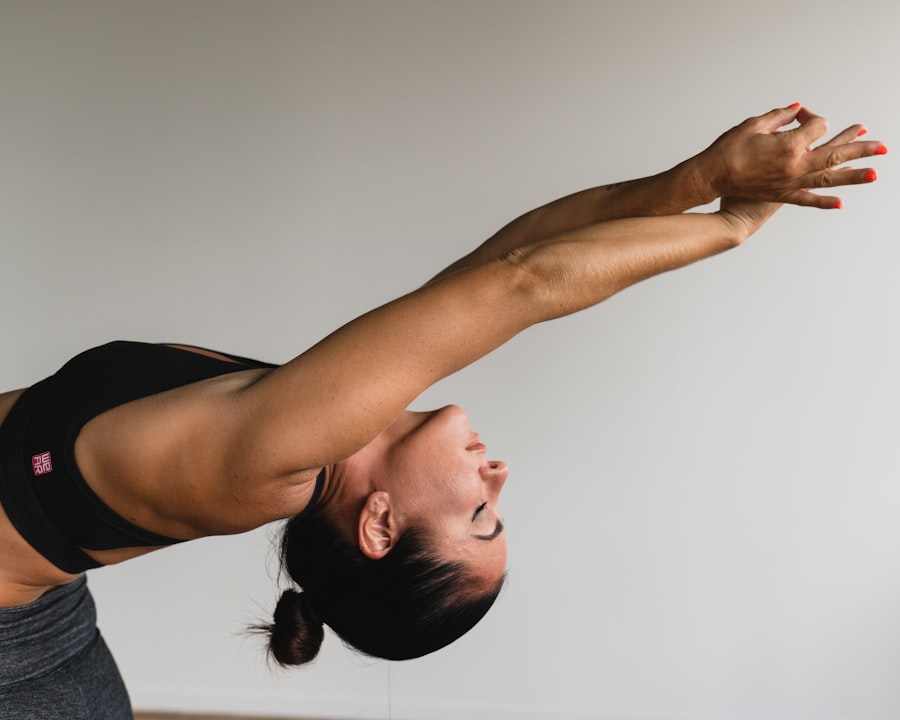Type 2 diabetes is a chronic condition that affects the way our bodies metabolize sugar, or glucose. In this condition, our cells become resistant to insulin, a hormone that helps regulate blood sugar levels. As a result, glucose builds up in our bloodstream, leading to various health complications if left unmanaged.
This form of diabetes is often associated with lifestyle factors such as obesity, physical inactivity, and poor dietary choices. It is important for us to understand that Type 2 diabetes can develop gradually, and many individuals may not even realize they have it until they experience significant health issues. The prevalence of Type 2 diabetes has been on the rise globally, making it a pressing public health concern.
According to the World Health Organization, millions of people are living with this condition, and the numbers continue to grow. This increase can be attributed to various factors, including sedentary lifestyles and the consumption of high-calorie diets. For us, recognizing the symptoms—such as increased thirst, frequent urination, fatigue, and blurred vision—can be crucial for early detection and management.
By understanding what Type 2 diabetes is, we can take proactive steps toward prevention and treatment.
The Benefits of Yoga for Type 2 Diabetes
Yoga offers a holistic approach to managing Type 2 diabetes that encompasses physical, mental, and emotional well-being. One of the primary benefits of yoga is its ability to enhance physical fitness through gentle movements and stretches. These practices can help us improve our insulin sensitivity and lower blood sugar levels.
Regular yoga sessions can also promote weight loss, which is particularly beneficial for those of us who are overweight or obese—a common risk factor for developing Type 2 diabetes. In addition to its physical benefits, yoga also provides significant mental health advantages. The practice encourages mindfulness and relaxation, which can help us manage stress more effectively.
Stress has been shown to negatively impact blood sugar levels, so by incorporating yoga into our routine, we can cultivate a sense of calm and balance. Furthermore, the community aspect of yoga can foster social connections that enhance our overall well-being. By participating in group classes or workshops, we can share experiences and support one another in our journey toward better health.
How Yoga Can Help Control Type 2 Diabetes

The practice of yoga can play a pivotal role in controlling Type 2 diabetes by promoting a balanced lifestyle. Through regular practice, we can develop greater awareness of our bodies and their needs. This heightened awareness can lead us to make healthier choices regarding diet and exercise.
For instance, as we become more attuned to how certain foods affect our energy levels and blood sugar, we may be more inclined to choose nutritious options that support our health goals. Moreover, yoga encourages us to focus on our breath and cultivate mindfulness. This practice can help us manage cravings and emotional eating—common challenges for those of us living with Type 2 diabetes.
By learning to respond to our bodies with compassion rather than judgment, we can create a healthier relationship with food. Additionally, the meditative aspects of yoga can help us develop coping strategies for dealing with stressors that may otherwise lead to unhealthy habits.
Yoga Poses for Type 2 Diabetes
Incorporating specific yoga poses into our routine can be particularly beneficial for managing Type 2 diabetes. Poses such as the Warrior series (Warrior I, II, and III) are excellent for building strength and improving circulation. These poses engage multiple muscle groups and promote better blood flow, which can aid in glucose metabolism.
Additionally, poses like Downward-Facing Dog and Bridge Pose help stimulate the pancreas and improve insulin sensitivity. Gentle twists, such as seated spinal twists or supine twists, can also be advantageous for digestion and detoxification. These poses encourage the proper functioning of internal organs and may help regulate blood sugar levels.
As we practice these poses regularly, we may notice improvements in our overall energy levels and mood, further supporting our journey toward better health.
Breathing Techniques for Type 2 Diabetes Management
Breathing techniques play a crucial role in yoga practice and can significantly impact our ability to manage Type 2 diabetes. Pranayama, or breath control, helps us regulate our body’s response to stress and promotes relaxation. Techniques such as diaphragmatic breathing or alternate nostril breathing can help lower cortisol levels—hormones that can elevate blood sugar when we are stressed.
By incorporating these breathing exercises into our daily routine, we can create a sense of calm that supports our overall well-being. Practicing deep breathing for just a few minutes each day can help us feel more centered and focused. This mindfulness can translate into better decision-making regarding our health choices, ultimately aiding in the management of Type 2 diabetes.
Mindfulness and Stress Reduction in Type 2 Diabetes Management

Mindfulness is an essential component of managing Type 2 diabetes effectively. By cultivating mindfulness through yoga and meditation practices, we can develop a greater awareness of our thoughts, feelings, and bodily sensations. This awareness allows us to recognize triggers that may lead to unhealthy behaviors or emotional eating patterns.
Stress reduction is equally important in managing Type 2 diabetes. Chronic stress can lead to elevated blood sugar levels due to the release of stress hormones like cortisol. By incorporating mindfulness techniques into our daily lives—whether through meditation, yoga, or simply taking time to breathe—we can reduce stress levels and improve our overall health outcomes.
As we learn to respond to stressors with calmness rather than anxiety, we may find it easier to maintain healthy habits that support our diabetes management.
Precautions and Considerations for Practicing Yoga with Type 2 Diabetes
While yoga offers numerous benefits for those of us living with Type 2 diabetes, it is essential to approach the practice with caution. Before starting any new exercise regimen, we should consult with our healthcare provider to ensure that it is safe for us based on our individual health status. Certain poses may not be suitable for everyone, especially if we have other underlying health conditions or complications related to diabetes.
Additionally, it is crucial for us to listen to our bodies during practice. If we experience any discomfort or unusual symptoms while practicing yoga—such as dizziness or excessive fatigue—we should stop immediately and seek guidance from a qualified instructor or healthcare professional. Staying hydrated is also vital; we should ensure that we drink enough water before, during, and after our yoga sessions to maintain optimal hydration levels.
Getting Started: Tips for Beginners with Type 2 Diabetes
For those of us who are new to yoga and looking to incorporate it into our routine for managing Type 2 diabetes, starting slowly is key. We might consider joining a beginner’s class where an experienced instructor can guide us through the basics of yoga practice while ensuring that we perform poses safely and effectively. Many studios offer classes specifically designed for individuals with chronic conditions; these classes can provide a supportive environment tailored to our needs.
Establishing a consistent practice schedule is also important for reaping the benefits of yoga over time. We could aim for short sessions several times a week rather than long practices infrequently; even just 15-20 minutes of yoga daily can make a significant difference in how we feel physically and mentally. Finally, we should remember that yoga is not just about physical postures; incorporating mindfulness practices such as meditation or breathwork into our routine can enhance our overall experience and support our journey toward better health management.
In conclusion, embracing yoga as part of our lifestyle can be a transformative experience for those of us living with Type 2 diabetes. By understanding the condition itself and recognizing the myriad benefits that yoga offers—from physical fitness to stress reduction—we can take proactive steps toward managing our health more effectively. With patience and dedication, we can cultivate a practice that not only supports our physical well-being but also nurtures our mental and emotional health on this journey toward balance and vitality.
